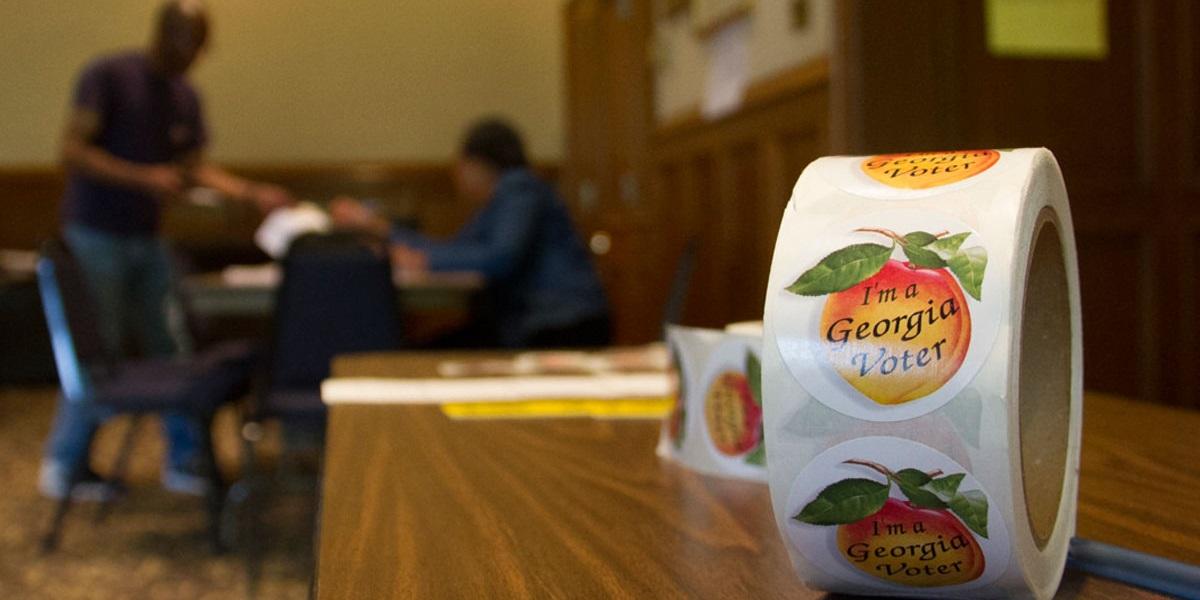
Georgia can learn something from a fellow Deep South state when it comes to raising the bar for education. In recent years, many Georgia public schools have experienced academic failure, been embarrassed by administrative scandals, and found themselves in financial ruin. They are in desperate need of a solution. The model crafted in Louisiana to address underperforming school districts may prove palatable for the Peach State.
In his State of the State address, Gov. Nathan Deal (R-Ga.) outlined new plans to manage the troubled public education system, including a proposal to broaden the state’s power to intervene in poorly-performing schools similar to Louisiana’s program.
Democrats in the state claim that Gov. Deal, alongside the Republican-controlled state legislature, has shortchanged Georgia’s children by cutting funding for public education. It is true that budget shortfalls caused by the 2008 financial crisis and subsequent recession forced austerity cuts to the state budget. These cuts temporarily pressurized local school districts by forcing them to find funding elsewhere in order to fill the spending gaps. But overall, education spending is up by $868.6 million since the governor took office in 2011.
Though the state’s education funding formula – a baseline mechanism which determines state funding for local school boards – is older than some members of the state legislature, the appropriations process is not the most pressing problem. More than half of the state budget is directed toward education spending, but the system needs a structural adjustment to make any amount of funding effective. Repairing the education environment for students in poor-performing districts should be prioritized rather than simply increasing funding. This is what will improve these students’ social welfare.
Last August, the Georgia Department of Education released a list of alert schools, described as those with “the lowest achievement of the all students group in terms of proficiency on the statewide assessments.” Local districts have failed to revive these low-performing schools independently. Many of these low-performing institutions are located in low-income districts – mostly within the Atlanta perimeter or rural South Georgia – where student performance is perpetually underwhelming. Many of these schools belong to districts that face administrative incompetence and significant fiscal hurdles, thus building the case for outside assistance. There is a clear impetus for a change in direction.
Charter schools are becoming a vital part of the education debate. These taxpayer-funded institutions are exempt from many standards and regulations that apply to traditional public systems, thus permitting more curriculum flexibility. The governor’s plan to grant charters as a tool to improve academic welfare during his first term was shot down when the Supreme Court of Georgia ruled that charters wrongly infringed upon local school districts. But now that voters have approved a constitutional amendment creating the state’s charter school commission – the entity in charge of granting waivers – a window of opportunity is open to address the challenge of lifting the bottom line in education.
And this is where Georgia should follow Louisiana’s lead.
The Louisiana Recovery School District program was pioneered in the early 2000s and adopted through state referendum. The referendum created a state-controlled entity which assumed control of chronically underperforming schools. According to the Cowen Institute at Tulane University, the Louisiana effort is charting progress. Since 2003, students have recorded gains in standardized test scores and school performance ratings have increased steadily. Most critically, the number of schools considered academically unacceptable is down by nearly 50 percent in recent years.
If modeled after the Louisiana program, a potential Georgia version could grant charters to struggling schools. These charters would put the school under the control of a specially appointed superintendent responsible for revitalization efforts. These superintendents would not be bound by typical Georgia education standards. Schools that do not show signs of improvement lose their charter. Those proving academic progress would be returned to local control.
Many claim that merely increasing funding for Georgia’s education system will allow local leaders to appropriate more efficiently and ultimately improve the learning environment. However, this conventionally popular theory loses credibility when the schools continually fail performance examinations, regardless of funding levels.
Systems like Clayton County Schools, City of Atlanta Schools, and DeKalb County Schools – metro-Atlanta districts plagued by structural administrative deficiencies – recently scored at the bottom of the Georgia Department of Education’s College and Career Readiness Performance Index. Though poorly-funded school systems typically fare worse on standardized examinations, merely increasing appropriations will be an insufficient antidote to the ills draining lagging districts without a structural change. Poor resource management and curriculum administration has systematically complicated improvement efforts in low-performing schools. It’s time to try something more innovative.
Gov. Deal is rightfully addressing the state of our education system. An effective government makes sure no student is a victim of circumstance and enables each one to compete in today’s world. The Recovery School District model could be the mechanism by which Georgia climbs the ranks of excellence in education while simultaneously building a more formidable workforce.
Georgians deserve an education system that will prioritize the academic welfare of all students, including those trapped in failing schools. Let’s look to Louisiana and give their program a try in order to raise student performance. It’s time to solve this problem.

